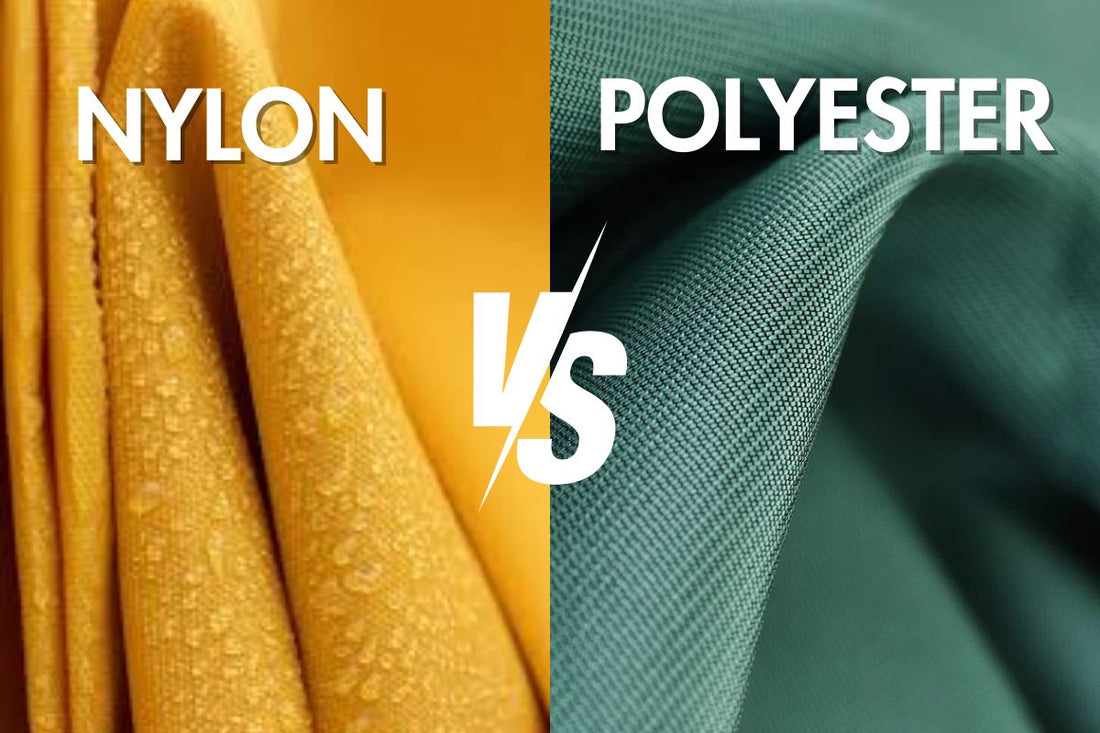
Nylon vs Polyester: Which Is More Durable?
Share
When it comes to choosing between nylon and polyester fabrics, two of the most widely used synthetic textiles, durability is one of the biggest deciding factors. Both materials are known for their strength, versatility, and resistance to wear and tear — but which one truly stands the test of time?
Let’s dive into a detailed comparison to discover which fabric reigns supreme in the world of durable clothing materials.
⸻
1. The Basics: What Are Nylon and Polyester?
Both nylon and polyester are synthetic fibers made from petrochemicals through a process called polymerization. While they may look and feel similar, their chemical structures and manufacturing processes give them distinct properties.
• Nylon fabric was the first fully synthetic fiber, created by DuPont in the 1930s. It was originally used as a silk alternative in stockings and parachutes because of its elasticity and strength.
• Polyester fabric, developed shortly after, became popular for its wrinkle resistance, quick-drying ability, and easy maintenance — key reasons it’s so commonly used in everyday clothing and sportswear.
While both are synthetic, their unique characteristics influence how they perform in terms of durability, flexibility, and comfort.
⸻
2. Strength and Durability
When comparing raw tensile strength, nylon slightly outperforms polyester.
• Nylon is highly elastic and resilient, meaning it can stretch under stress and return to its original shape. This makes it ideal for activewear, ropes, bags, and performance gear.
• Polyester, while less stretchy, is more dimensionally stable — it holds its shape, resists shrinking, and maintains structure even after repeated washes.
Verdict:
👉 Nylon wins in tensile strength and abrasion resistance.
👉 Polyester wins in shape retention and overall stability.
⸻
3. Resistance to Water, UV, and Heat
Durability isn’t only about toughness — it’s also about how fabrics respond to environmental stress.
• Water Resistance: Polyester naturally repels water better than nylon. Nylon tends to absorb moisture, making it heavier and slower to dry.
• UV Resistance: Polyester has superior UV protection. Nylon can yellow or weaken after prolonged exposure to sunlight, while polyester retains color and structural strength outdoors.
• Heat Resistance: Polyester can withstand higher temperatures, making it more resistant to heat damage from ironing or industrial washing.
Verdict:
👉 Polyester is more durable for outdoor use, sun-exposed environments, and high-heat conditions.
⸻
4. Abrasion and Wear Resistance
Both materials are known for their toughness, but nylon tends to perform better under friction and abrasion. That’s why nylon is often used in hiking gear, backpacks, outerwear, and heavy-duty industrial clothing.
Its abrasion resistance helps it withstand rough use, making it a favorite for performance fabrics and tactical wear.
Verdict:
👉 Nylon is superior for heavy-duty wear and tear and high-friction applications.
⸻
5. Longevity and Maintenance
• Polyester retains its look and texture longer with minimal care. It resists wrinkles, stains, and shrinking, making it a low-maintenance, long-lasting fabric.
• Nylon, while stronger, may show aging signs like UV fading or yellowing due to body oils and sun exposure.
Verdict:
👉 Polyester lasts longer for everyday use and requires less maintenance.
⸻
6. Environmental Impact
Both nylon and polyester are petroleum-based and non-biodegradable, contributing to synthetic waste. However, eco-conscious innovations have led to recycled polyester (rPET) and regenerated nylon (Econyl) — both created from waste materials like plastic bottles and discarded fishing nets.
These recycled fabrics maintain the same durability while significantly reducing their carbon footprint.
Verdict:
👉 Choose recycled nylon or recycled polyester for a sustainable and durable fabric choice.
⸻
Overall Winner for Durability: Polyester
When considering all factors — from longevity to weather resistance — polyester takes the crown.
While nylon offers superior raw strength and abrasion resistance, polyester excels in UV durability, maintenance ease, and long-term performance, making it the better choice for everyday wear, sportswear, and outdoor clothing.
⸻
Conclusion
If you need a fabric for high-stress or heavy-duty applications like bags, ropes, or technical gear, nylon is your best choice. But if your priority is color retention, longevity, and easy care, polyester stands out as the more durable and practical option.
Ultimately, the choice between nylon and polyester fabrics depends on your needs — performance or convenience, outdoor resistance or everyday use.
Both fabrics continue to shape the modern textile industry, offering a perfect balance of durability, versatility, and innovation.
